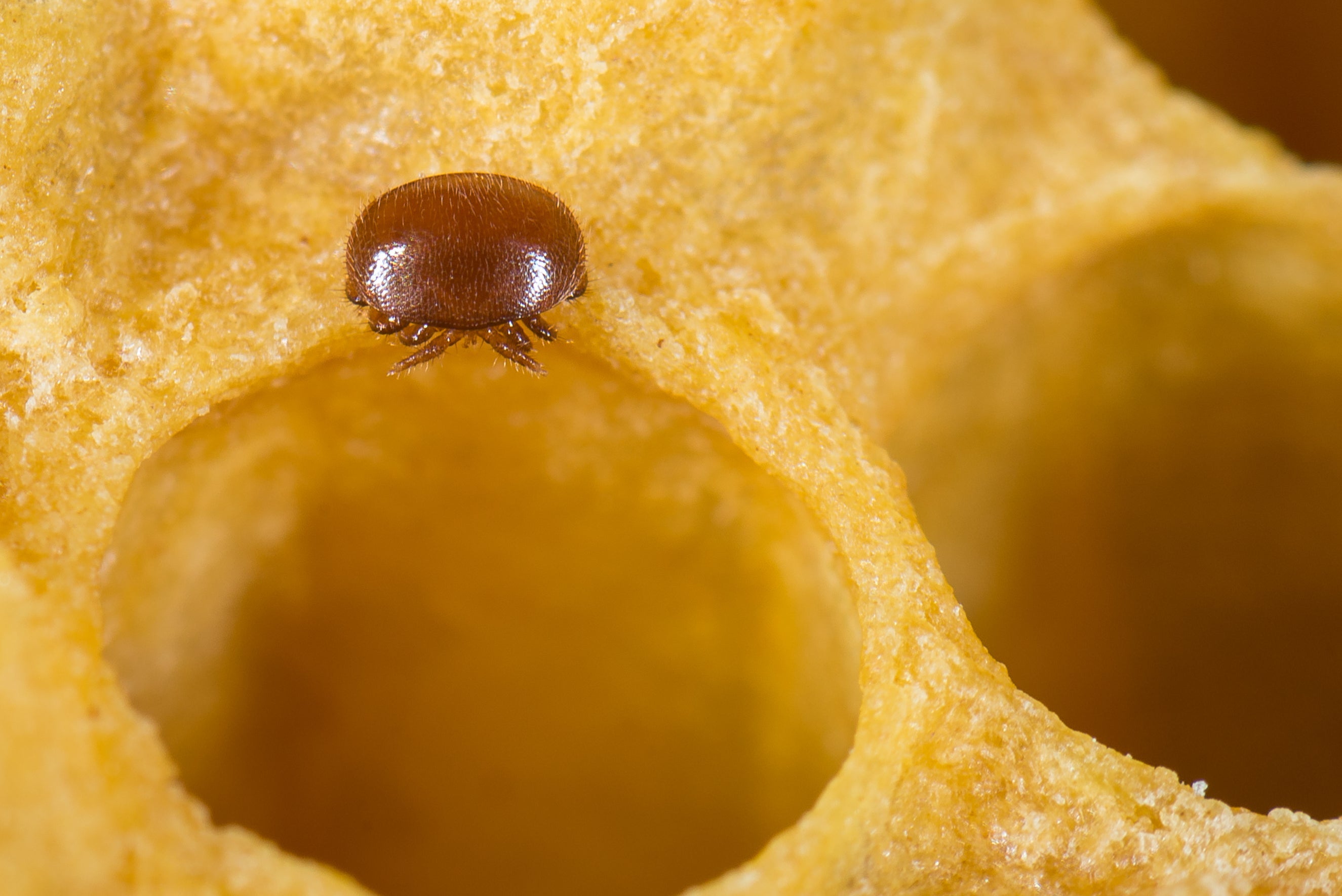Varroa Mite or European Foul Brood? How to tell the difference
- Varroa mite infestations can present symptoms that mimic other common bee brood diseases like European Foul Brood.
- Recognizing the unique symptoms of Varroa-induced issues is crucial for accurate diagnosis and timely intervention.
- A comprehensive symptom checklist helps beekeepers differentiate between Varroa and other diseases.
- Varroa symptoms often appear when mite levels are critically high, indicating an urgent need for action.
- Proactive monitoring and swift response are vital to prevent colony collapse due to Varroa mites.
Introduction: The Challenge of Diagnosing Varroa Mite Symptoms
Beekeeping comes with its share of challenges, and when it comes to Varroa mites, beekeepers quickly realise that it introduces a new set of symptoms that may initially resemble other brood diseases.
Dr. Mark Goodwin sheds light on these nuances, emphasising the importance of recognising these symptoms for effective Varroa management.
Watch video here:
Confusing Varroa Mite with Other Brood Diseases: A Critical Distinction
As seasoned beekeepers, you're likely well-acquainted with various brood diseases such as Chalk brood, European foul brood, and American foul brood. Each of these maladies comes with its own set of classical symptoms, making diagnosis a relatively straightforward process.
However, Varroa mites throw a curveball into this familiar landscape by introducing a new set of symptoms that share similarities with European foul brood.
Varroa Mite or European Foul Brood? A Symptom Guide
Varroa-induced symptoms may bear resemblance to European foul brood, adding a layer of complexity to the already intricate task of diagnosing bee diseases.
Dr. Goodwin acknowledges this challenge and highlights the need for beekeepers to familiarise themselves with these distinct symptoms.
We've compiled a checklist below of bee diseases and symptoms, and you can also view the full checklist and downloadable PDF here.
Symptoms Checklist:
| Symptom | Description | Varroa | European Foulbrood | Chalk Brood | Sacbrood Virus | American Foulbrood |
|---|---|---|---|---|---|---|
| Deformed Wings | Distorted wing shapes and sizes in adult bees. | ✔️ | ||||
| Darkened Brood Cells | Brood cells appear darker due to the presence of mites. | ✔️ | ||||
| Chewed or Pierced Brood Caps | Irregular openings in capped brood cells caused by mite activity. | ✔️ | ||||
| Abnormal Pupae | Deformed or discolored pupae in the capped cells. | ✔️ | ||||
| Reduced Bee Longevity | Shortened lifespan of adult bees due to mite infestation. | ✔️ | ||||
| Ropey Larvae | Larvae in capped cells become ropy and discolored. | ✔️ | ||||
| Sunken or Discolored Caps | Caps are intact but may appear sunken or discolored. | ✔️ | ||||
| Foul Odor | Unpleasant odor emanating from the affected brood. | ✔️ | ✔️ | ✔️ | ||
| Irregular Cell Capping | Abnormalities in cell capping observed during inspection. | ✔️ | ✔️ | ✔️ | ✔️ | ✔️ |
Downloadable Bee Diseases & Varroa Mite Checking Tool:
You can download a checklist created by Ecrotek here, which provides insights into the symptoms associated with various bee diseases, including those induced by Varroa mites.
Recognising the Red Flags: Early Detection for Varroa Control
Varroa-induced symptoms tend to manifest when mite levels reach a critical high.
Beekeepers must stay vigilant and swiftly respond upon detecting these symptoms, as they serve as an early warning sign that the colony is in distress.
Proactive intervention becomes crucial to prevent the imminent demise of the bee community.
Conclusion: Empowering Australian Beekeepers Against Varroa Mites
In the intricate world of beekeeping, Varroa mites introduce a unique set of challenges by producing symptoms that may mimic other brood diseases.
Recognising these distinctive signs early on is paramount for effective Varroa management. Beekeepers, both in Australia and other regions, are encouraged to familiarize themselves with these symptoms, ensuring a swift and informed response to protect their valuable colonies.
As the beekeeping community collaborates and shares insights, collective knowledge becomes a powerful tool in the ongoing battle against Varroa mites.
Summary of Key Takeaways for Varroa Control
- Varroa mite symptoms can resemble other brood diseases; accurate identification is vital.
- Utilize symptom checklists and reliable resources to differentiate Varroa from other ailments.
- High Varroa levels trigger visible symptoms, serving as a critical alert for beekeepers.
- Prompt action upon symptom detection is essential to prevent severe hive damage or loss.
- Continuous learning and community collaboration strengthen Varroa management efforts.
Need Help with Varroa Mite Detection & Management?

Ecrotek Australia offers a comprehensive range of tools and resources to assist you in accurately diagnosing and effectively managing Varroa mite infestations. From diagnostic kits to treatment options, we're here to support your hive health.
Explore Varroa Management ProductsHave questions about identifying bee diseases or Varroa symptoms? Our expert team is ready to provide personalized advice. Contact us today!


